Features
Rosie Sharp: wife of Four Seasons Hotels founder Issy Sharp lays it all out in her memoir
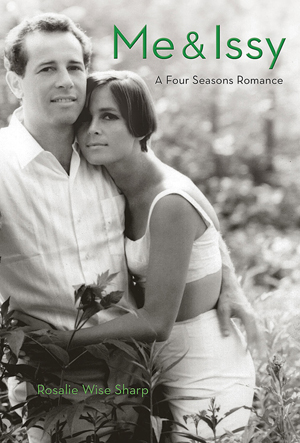 By BERNIE BELLAN I’m not much for reading autobiographies; I prefer to read someone else’s account of a person’s life because I figure you’re much more likely to find out what someone’s life was truly like when it was written by someone else – warts and all.
By BERNIE BELLAN I’m not much for reading autobiographies; I prefer to read someone else’s account of a person’s life because I figure you’re much more likely to find out what someone’s life was truly like when it was written by someone else – warts and all.
However, when I was asked whether I might like to receive an advance copy of the memoir of Rosalie Sharp whose name, to be honest, was unfamiliar to me – but who, I was informed, was the wife of Four Seasons Hotel founder Isadore Sharp – I thought: Sure, it’s always interesting to read of the lives of the rich and famous – and when they’re Jewish and Canadian to boot, let’s go for it.
Now, to be even more honest, as much as I’ve heard plenty about Four Seasons hotels – that they set the standard for service and luxury when it comes to hotels, I had never read much about Isadore Sharp. How much would his wife want to talk about her husband in her memoir, I wondered? And how good a writer would she be?
The answer to the first question is: Quite a bit, while the answer to the second question is that Rosalie Sharp is an excellent writer. No doubt she received quite a bit of help in putting together this very interesting book but, as she explains early on, she has written quite a few books previously, mostly having to do with interior design – which is one of her two utmost passions – the other being painting.
What surprised me most about Rosalie Sharp though is how much her formative years as a young girl in Toronto still leave a strong imprint on her, even today, as she must now be 87. (She completed the book in 2021 when she was 86, she explains.) Isadore, by the way, is 91. They’re both as healthy as one could hope two seniors in their dotage could be expected to be. As a matter of fact, “Rosie”, as she prefers to be known, is quite candid in describing her own health situation. At one point she tells a funny story about having a colonoscopy recently, but while she is driving home in Issie’s fancy Mercedes, she can’t hold it in. She goes on to tell how she hid her accident from Issie when she came home, stripping off her dress without him seeing and running out to the car with a pail of soap and water and cleaning up.
The book is full of interesting stories. Rosie (née Wise) grew up in a very poor household in the 1930s – where there was no telephone, but where the phone book served as a substitute for toilet paper. Her parents lived in a non-Jewish area of Toronto, where they ran a dry goods store. Mr. Wise was also an excellent tailor. As for Mrs. Wise, however, Rosie still has an aversion to soup, she explains, after having grown up smelling her mother’s absolutely horrible broth – which she could never bring herself to taste.
Although the book devotes a certain amount of space to describing Issy Sharp’s much more comfortable upbringing – which Rosie writes about in an early chapter, prior to going into detail about her own much more difficult childhood, the lesson that one takes from reading about young Issy is how brimming with confidence he was, even at a very young age. Not only that, he was extremely good looking – as the very many photographs interspersed throughout the book illustrate.
He was also a terrific athlete. Issy was gifted in so many sports, while Rosie never had the opportunity to take piano lessons, which she so desperately wanted to take as a youngster. She also never learned to swim, she admits, but that didn’t stop her from being a sport and donning a life jacket while going on a canoe trip with the family once – or even waterskiing.
The story how Issy and Rosie met at a wedding makes for a great romantic tale. But Rosie admits that she knew of Issy’s reputation as a consummate ladies’ man – and she honestly doubted that he would remain true to her once they became a couple. There are quite a few instances in the book when Rosie describes her own naiveté about sex – something with which Issy was extremely well versed. (He was 22 when they met; she was 17.) Yet, he was always extremely considerate toward Rosie when it came to the physical side of their relationship. She does reveal though that she became pregnant when she was only 19 and did have an abortion because neither she nor Issy were ready to start a family at that point.
While the book does a good job of delving into how Issy Sharp was an absolute genius when it came to building – not just hotels, but apartment blocks as well, to the point where, as of the date of publication of the book, there are now 134 Four Seasons hotels throughout the world, it wasn’t the pursuit of riches that drove Issy, according to Rosie. They have certainly led very comfortable lives, but the first five years of their marriage were spent living in a very humble apartment, she says, and although they’ve moved several times during their lifetime together, it’s been the building and decorating of homes that has been the attraction for them, rather than the accumulation of “toys.”
In fact, Rosie never cared much about things like cars, she says. In one amusing anecdote she describes her driving in what she thought was a Toyota Land Cruiser for years, only to discover that it had a Volvo logo in it. As a collector though, Rosie has been obsessed with the accumulation of ceramic figures, along with a certain number of paintings, she notes – but it’s her ceramic figure collection, which extends into the thousands, of which she’s proudest.
Early on in life Rosie exhibited true artistic talent. She tells of drawing hand lettered signs for her parents’ dry good store that were so well done that people seeing them thought they had been printed by a machine. Later she parlayed her artistic eye into a love for interior design. Even while she was raising four young boys, Issy encouraged her to acquire a formal education in interior design, which she did. She eventually opened her own interior design firm. Much of her work, as one might expect, was for Four Seasons hotels, but she wasn’t given the work simply because she was married to the boss. Issy pays full credit to the many innovations Rosie introduced into the hotels over the years.
At times though, I must admit I was somewhat bored reading Rosie’s quite detailed descriptions of her projects. While she is certainly extremely descriptive, I’m not sure how much readers really care to read about design – whether it be interior design or the design of ceramic objects. Of course, those are both two of Rosie’s passions – and she is allowed to indulge herself as much as she likes. It’s her memoir, after all.
Where I think Jewish readers of a certain age will find this book most resonating though is when Rosie writes about the many relatives she lost in the Holocaust. There is a great amount of time spent exploring the lives of her predecessors in Poland. Rosie can trace her family roots back to the 1700s. (She also does quite a bit of the same for the Sharp family.)
Both she and Issy grew up in Yiddish-speaking households and Rosie harbours a great deal of nostalgia for those early years. Like most Jews growing up in the 1930s the Wise household was an observant home. (She tells a hilarious story about being sent to a butcher a long way off to buy a chicken for the Friday night dinner, but having the bloody chicken, freshly slaughtered, ooze all over her on the bus ride home.) She also emphasizes how important having regular Shabbat dinners with their family has been for both her and Issy throughout their lives – only to see that disrupted when Covid hit. (As a matter of fact, it was Covid that led to her writing this book, as she found that she had quite a bit more time on her hands than would normally have been the course.) In a departure from her observant upbringing though, Rosie says the only time she sets foot in a synagogue nowadays is during Yom Kippur – and that she doesn’t believe in God.
Interestingly, while Rosie acknowledges the role she’s played for years as the wife of a charming and brilliantly successful businessman, accompanying him on many trips to far off lands where it was her duty to sit through endless dinners with some of the world’s most powerful figures (including one ghastly dinner in Japan where she says the fish that was served was still wriggling!), Rosie hardly sees herself as a society maven. She did her duty – and often contributed to the success of Four Seasons on her own, both as a designer and as the gracious wife of a very powerful man, yet she notes over and over again that she feels most at home in her own house – and there have been many different ones over the years, including a home that they rebuilt from scratch in Palm Springs.
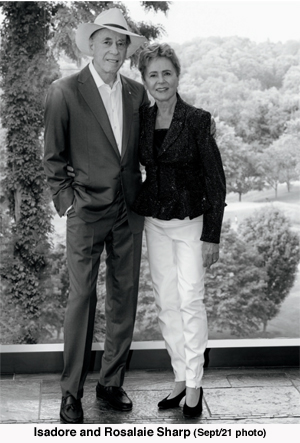 Here’s a description of Issie and Rosie’s harmonious relationship, as given by their son Tony on the occasion of their 62nd wedding anniversary:
Here’s a description of Issie and Rosie’s harmonious relationship, as given by their son Tony on the occasion of their 62nd wedding anniversary:
“She paints. He promotes. They are full-fledged partners in life.
“Partners in bridge: she is the one who takes the risks and swings for the fences, and he plays more by the book and the percentages, yet rarely an argument, and they regularly place near the top.
“Partners in design…not the least of which is their new bungalow, where our dad concerned himself with light, views, and land assembly, and our mom, the architecture, interior design…Partners in dance. and, can they dance! Partners in fitness – still following Jane Fonda’s Advanced Workout from 1985…
“Partners in philanthropy. Including what our mother considers one of our father’s best achievements: establishing the Terry Fox Run. Proposed in a telegram from our dad to Terry, the run is now the largest single-day fundraising event in the world, having raised $750 million for cancer research.
“And of course, partners as parents. Sharing and living the values that have guided us as a family, and for which we are grateful.”
By this time, if you’ve read this far, you must be thinking: What a perfect couple – and I’m sure they are, but if I could ask two questions of Rosie, they would be this:
You had a son named Chris who died tragically at only age 17 when a melanoma was improperly diagnosed by a doctor. You write so eloquently of what that loss meant to the two of you – as I’m sure it would to any other parents who have lost a child.
But – why “Chris?” I know that it’s not totally unheard of for a Jewish child to be named Chris or Kristina, although from what I’ve read, it’s often when one of the parents isn’t Jewish. But both you and Issy came from traditional Jewish upbringings. Was there a particular reason that you chose to name your youngest son “Chris?”
And, my second question: I had to do some research to see that you and Issy have contributed substantially to many different causes, including the Hebrew University of Jerusalem. But nowhere in your book do I see any evidence that you took a particular interest in philanthropy yourself, especially as it relates to Jewish causes. I would imagine that someone of your renown would have been asked many times to lend their name to a particular Jewish fund-raiser. Perhaps it wasn’t of sufficient interest for you to write about that – or maybe it just wasn’t your thing. But, as someone who espouses the importance of Jewish values so strongly, wouldn’t “tzedakkah” have been one of the most important values? I’m not saying this as a criticism because I see that when you do a search of all the causes to which you and Issy have contributed, the list is a lengthy one. But I’m somewhat puzzled that, other than the Terry Fox Run, there’s no mention of any other cause to which you might have attached yourselves. After all, Issy is worth over $500 million from what I’ve read (while the Four Season hotel chain, which is now owned primarily by Bill Gates – is valued at over $10 billion).
Still, let’ s not let these fairly petty questions detract from what is, on the whole, quite the entertaining read.
“Me & Issy – A Four Seasons Romance”
By Rosalie Wise Sharp
Published by ECW Press, Toronto, 2022
274 pages
Available in both print and Kindle editions
Features
Japanese Straightening/Hair Rebonding at SETS on Corydon

Japanese Straightening is a hair straightening process invented in Japan that has swept America.

Features
History of the Winnipeg Beach Synagogue: 1950-2025
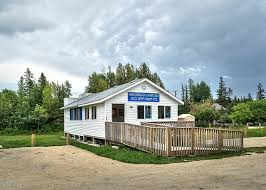
By BERNIE BELLAN The history of the Winnipeg Beach Synagogue is a fascinating one. We have had several articles over the years about the synagogue in The Jewish Post & News.
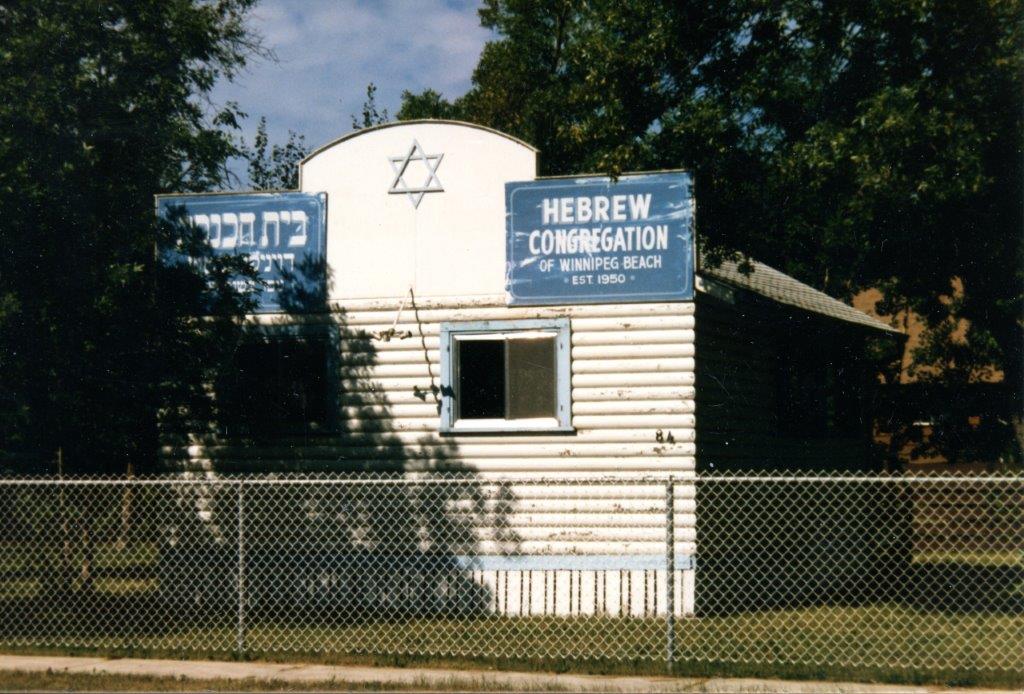
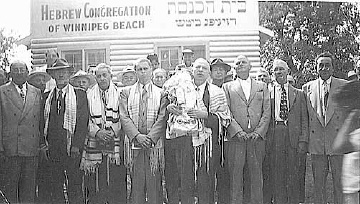
In June 2010 I wrote an article for The Jewish Post & News upon the 60th anniversary of the synagogue’s opening. Here are the opening paragraphs from that article:
“Sixty years ago a group of Winnipeg Beach vacationers decided that what their vacation area lacked was a synagogue. As it happened, a log cabin one-room schoolhouse in the Beausejour area happened to be available.
“In due course, the log cabin was relocated to the corner of Hazel and Grove in Winnipeg Beach, where it stayed for 48 years.”
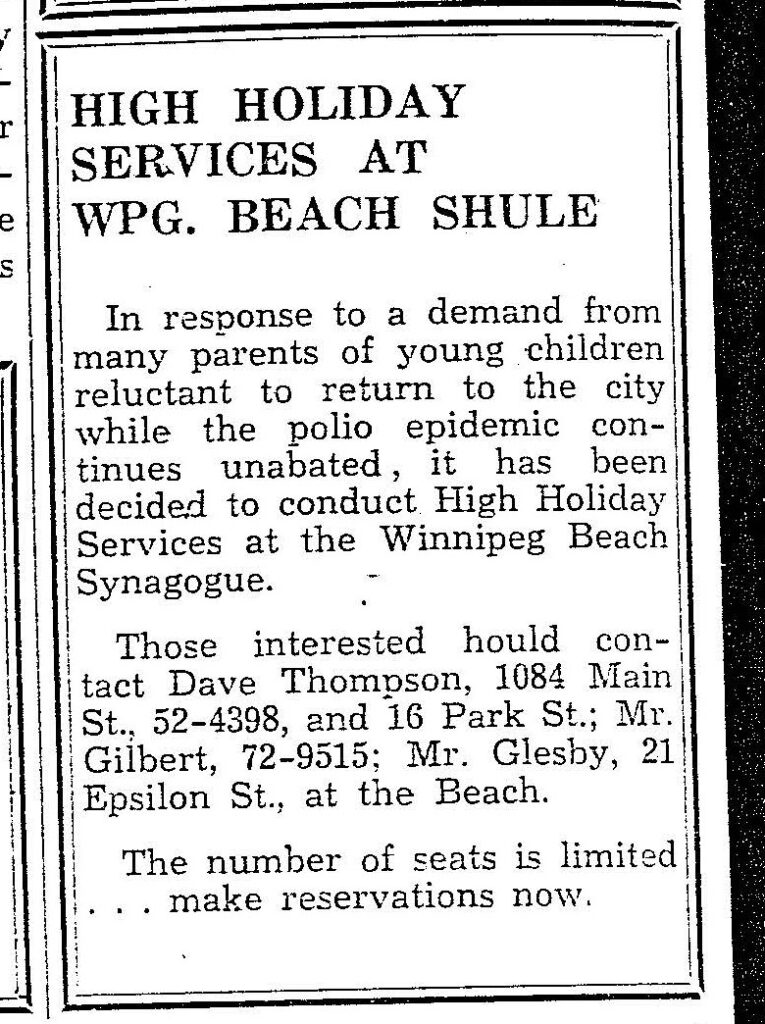
In December 1994 my late brother, Matt, wrote a story about the spraying of antisemitic grafitti on the synagogue which, at that time, was still situated at its original location on the corner of Hazel and Grove in the town of Winnipeg Beach:
“Two 16-year-olds spraypainted slogans like ‘Die Jews,’ ‘I’ll kill you Jews,’ and other grafitti in big letters on the beach synagogue.
“Jim Mosher, a news reporter for the Interlake Spectator in Gimli, said last Halloween’s vandalism against the synagogue wasn’t the first. In the late 1980s, he claimed, it was spraypainted with swastikas.
“Jack Markson, a longtime member of the Winnipeg Beach Synagogue, last week also said he could remember finding anti-Semitic grafitti spraypainted on the synagogue ‘a few years ago,’ and at least twice in the 1970s, when the cottage season was over.”
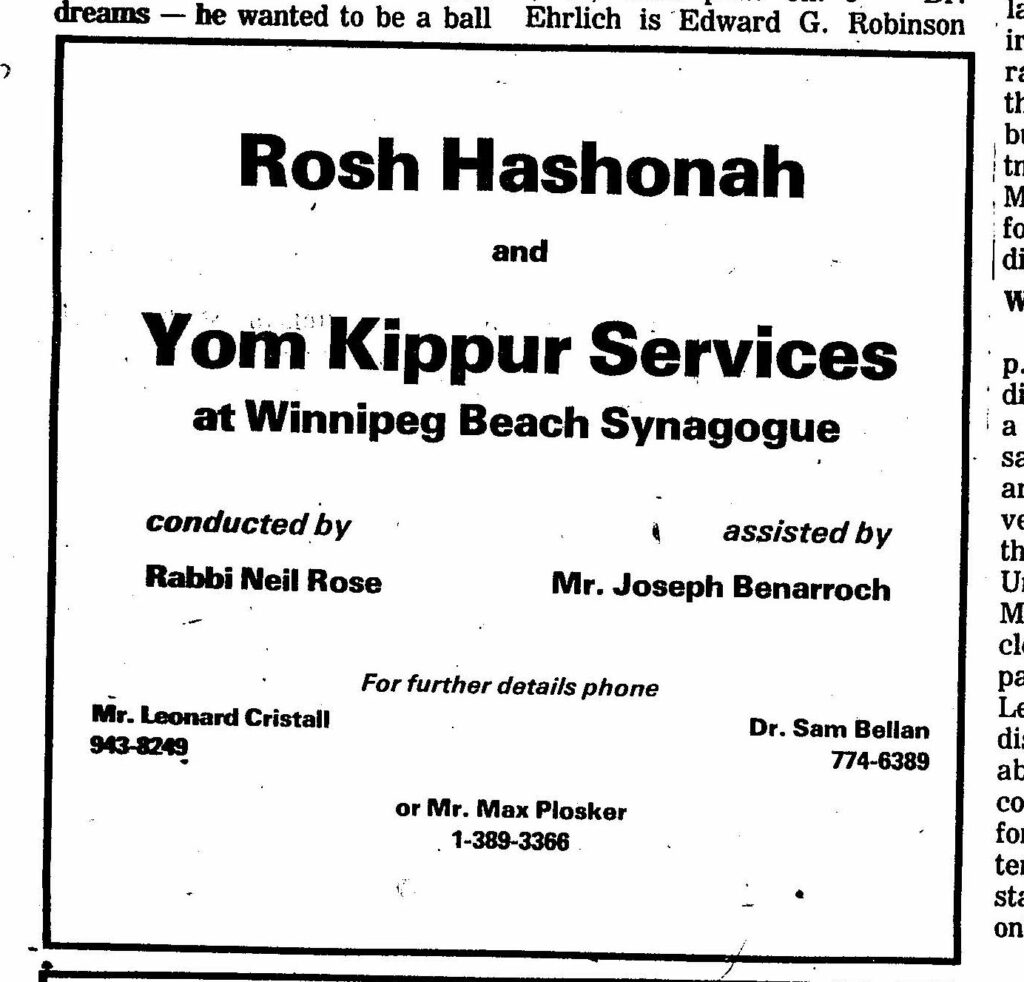
My 2010 article continued: “In 1998 the Town of Winnipeg Beach informed the members of the synagogue that the building would have to be hooked up to the town’s sewer and water system. Rather than incur the cost of $3-4,000, which was thought to be ‘prohibitive,’ according to longtime beach synagogue attendee Laurie Mainster, synagogue goers looked elsewhere for a solution.
“As a result, the board of Camp Massad was approached and asked whether the synagogue might be relocated there, with the understanding that the synagogue would be made available to the camp at any time other than what were then Friday evening and Saturday morning services.
“Over the years the ‘beach synagogue’ had come to be a very popular meeting place for summertime residents of Winnipeg Beach and Gimli. In fact, for years minyans were held twice daily, in addition to regular Saturday morning services. Of course, in those years Winnipeg Beach was also home to a kosher butcher shop.
“While the little synagogue, which measured only 18 x 24 feet, has gone through several transformations, including the move to Camp Massad, and the opening up to egalitarian services in 2007 (The move to egalitarian services was as much a practical necessity as it was a nod to the equality of women – the only Kohen present at the time was a woman!), it has always remained cramped at the best of times.
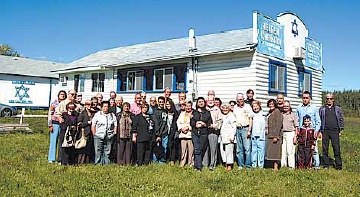
“In recent years the synagogue has seen the addition of a window airconditioner (although to benefit from it, you really have to be sitting just a few feet away), as well as a fridge that allows synagogue attendees to enjoy a regular Saturday morning Kiddush meal following the service.
“According to Laurie Mainster, the Saturday morning service has continued to be popular, even though many of the attendees now drive in from Winnipeg, as they have sold the cottages they once maintained.
“On the other hand, one of the side benefits to being located on Camp Massad’s grounds has been an infusion of young blood from among the camp counsellors.
“Since there is no longer a rabbi available to conduct services (Rabbi Weizman did lead services for years while he had a cottage at the beach), those in attendance now take turns leading the services themselves.
“Anyone may attend services and, while there are no dues collected, donations are welcome. (Donations should be made to the Jewish Foundation of Manitoba, with donors asked to specify that their donations are to be directed to the beach synagogue.)
“Mainster also says that the beach synagogue is now undergoing an expansion, which will be its first in 60 years. An entirely new space measuring 16 x 18 feet is being added – one that will allow for a real Kiddush area. (Until now, a table has been set up in the back of the synagogue and synagogue goers would help themselves to the buffet that is set up each Saturday during the summer. While pleasant enough, it will certainly be more comfortable to have an actual area set aside for the Saturday afternoon after service lunch.)
“As for dress, longtime attendee Abe Borzykowski (in an article written by Sharon Chisvin for the Free Press in 2007) remarked that ‘I don’t think there are many synagogues where people can attend in shorts, T-shirts and sandals and not feel out of place.’ “

As mentioned in that 2010 article, the beach synagogue at that time was about to undergo an extensive remodelling. Here is an article from a January 2011 issue that describes that remodelling process. The article was written by Bernie Sucharov, who has been a longtime member of the beach synagogue:
“The Hebrew Congregation of Winnipeg Beach made a major change to the synagogue this past summer. With the help of many volunteers, Joel Margolese being the project manager, the synagogue was expanded and an addition was built to handle the overflow crowds, as well as to add more space for the kiddush following services.
“The volunteers spent many Sundays during the summer months building the addition. Bad weather caused many delays, but finally the addition was completed one week before the official summer opening.
“The volunteers were: Joel Margolese, Gordon Steindel, Sheldon Koslovsky, Viktor Lewin, Harvey Zabenskie, Nestor Wowryk, Kevin Wowryk, Victor Spigelman, Jerry Pritchard, and David Bloomfield.
“On Sunday, June 25, 2010 a special ceremony was held to affix a mezzuzah to the front entrance door. Gordon Steindel had the honour of affixing the mezzuzah, which was donated by Sid Bercovich and Clarice Silver.
“Refreshments and food for the day were prepared by Phyllis Spigelman, also known as our catering manager. Throughout the summer, Phyllis, Lenore Kagan and other friends prepared the food for our kiddush.
“A sound system was donated by Arch and Brenda Honigman in memory of their father, Sam Honigman z”l. “The system was installed by Joel Margolese and Stevan Sucharov. This will allow the overflow crowd to hear the service in the new addition.
“There were also generous donations of 50 chumashim and an air conditioner. The chumashim were donated by Gwen, Sheldon and Mark Koslovsky. The air conditioner in the new addition was donated by Joel and Linda Margolese.
“The official opening of the synagogue for the summer took place on July 3, 2010. We had an overflow crowd of 70+ people.”
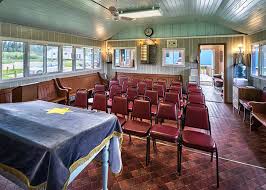
Since that 2010 major addition to the synagogue, it has also added a wheelchair ramp (although I’ve been unable to ascertain exactly when the ramp was built). Also, the synagogue also has its own outdoor privy now. (Attendees used to have to use facilities in Camp Massad.)
And, as already noted in article previously posted to this site (and which you can read at Beach Synagogue about to celebrate 75th anniversary), in recognition of that occasion, on August 2nd members of the synagogue will be holding a 75th anniversary celebration.
As part of the celebration anyone who is a descendant or relative of any of the original members of the first executive committee is invited to attend the synagogue that morning.
If you are a relative please contact Abe Borzykowski at wpgbeachshule@shaw.ca or aborzykowski@shaw.ca to let Abe know you might be attending.
Features
Kinzey Posen: CBC Winnipeg’s former “go-to guy”

By GERRY POSNER If former Winnipegger Lawrence Wall was the CBC go-to guy in Ottawa, CBC Winnipeg had its own version of a go-to guy for many years with none other than the very well known Kinzey Posen. Of course, many readers will recognize that name from his career with Finjan, the Klezmer group so famous across Canada and beyond. It has been written about Posen and his wife Shayla Fink that they have been involved in music since they got out of diapers. And, as an aside, their love and ability in music has now been transmitted to the next generation as in their son, Ariel Posen (but that’s another story).
Kinzey Posen (not to be confused with Posner, or maybe we are to be confused, but who knows for sure?), was a graduate of Peretz School, having attended there from nursery right until Grade 7, graduating in1966. That was followed by Edmund Partridge and West Kildonan Collegiate. Musically, he was in large part self taught. However, he did have some teachers along the way. After moving to Vancouver – from 1974-78, he had the chance to study acoustic classical bass with a member of the Vancouver Symphony Orchestra. When Kinzey lived in Vancouver, he also worked as a jazz musician.
Upon returning to Winnipeg, Kinzey enrolled as a mature student at the University of Winnipeg, where he obtained a Bachelor of Urban Studies degree. Although the degree was in no way connected to the career that followed, his attending the University of Winnipeg was critical to his connecting with the CBC. Why? you ask. Kinzey had a position after graduation working for the Institute of Urban Studies. While there, he met someone who invited him to work for the Department of Continuing Education as one of their program directors. At the time the Department of Continuing Education was located at 491 Portage Avenue, which was also known as the TJ Rice Building. The CBC also leased some space in the same building. According to Kinzey, the CBC part of the building “included HR, different shows and other support offices. Continuing Education was located in the basement and main floor and that’s where I worked.”
KInzey had long had an interest in the CBC, which made the fact that the CBC had some offices in the same building where he was working serendipitous. That Kinzey might be interested in visiting the CBC was not an accident. As a young boy he had a nightly connection to CBC, as it was his ritual to listen to CBC Radio (as well as all sorts of other radio stations across the USA) on his transistor radio every night in bed. He became enamoured of one particular CBC host, Bill Guest, so that when going to sleep, he imagined that he was Guest doing interviews with imaginary guests. That dream of working for CBC became a reality when he had a chance to do a one week gig with Jack Farr’s network program.
Kinzey took a week off from his Continuing Education job and spent five days at the CBC. That week was a training session for Posen, as he had to create ideas, research, pre-interview, write the script, and set up the studio for Farr’s interview. He was almost in his dream job – although not quite – since it was only for one week. His opportunity, however, came in 1988, when he was offered a one-year term as a production assistant – the lowest guy on the ladder, for a show called “ Simply Folk,” with the late Mitch Podolak as the host. Although he was indeed at the bottom as far as those working on the show were concerned, he took a chance and gave his notice to the U of W. The rest is history. In his new job, Kinzey learned how to become a producer. Lucky for him, at the end of the year, when the person he replaced was supposed to come back, she never returned (just like the song, “MTA,” by the Kingston Trio). At that point, Kinzey was hired full time at the CBC.
Kinzey was a fixture at the CBC for 27 years. During those years, Kinzey had the chance to work with Ross Porter, a respected former CBC host and producer, also with Karen Sanders – on the “Afternoon Edition.” One aspect of Kinzey’s job on the Afternoon Edition was to come up with ideas, mix sound effects, arrange interviews and music, to create a two-hour radio experience. In addition, he covered jazz and folk festivals and, as a result, was exposed to some of the best musicians in the world. With Ross Porter in the 1990s, he worked on a network jazz show called “ After Hours,” which was on from 8-10 PM five nights a week. Kinzey was involved with writing the scripts, picking the music, and recording the shows, as well as editing them and then presenting them to the network for playback.
Of course, over his career, Kinzey had many memorable moments. He told me about one of them. The story revolved around the National Jazz Awards one year in particular. The awards were to be broadcasted after the National News which, in those days, began much earlier in the evening, and were over by 8:00 pm. The legendary Oscar Peterson was lined up to play a half hour set at the awards, starting at 7:30. But, as Kinzey told me, Oscar Peterson had a “hate on” for the CBC ecause one of his recorded performances was wrongly edited and he refused to appear on CBC under any circumstances. As the time neared 8:05 PM, which was when the CBC was to begin its broadcast of the jazz awards, it became apparent that Oscar was not going to finish on time. As the producer of the awards show, Kinzey was tasked with telling Oscar Peterson to wrap it up and get off the stage. There was Kinzey Posen, a huge fan of Oscar Peterson, now faced with the prospect of telling Oscar – while he was still playing – with 500 people in the audience, to stop and get off the stage. Not often was or is Kinzey Posen frozen, but that was one such moment. There was one loud “Baruch Hashem” from Kinzey when Oscar completed his set literally just in time.
Clearly, Kinzey was part of a very successful run with After Hours as it was on the air for 14 years. It was easily one of the most popular shows on CBC Radio 2, and a winner of several broadcasting awards. Kinzey also played a major role in producing a two part documentary about legendary guitarist Lenny Breau.
When After Hours ended, Posen became one of the contributing producers to Canada Live and specialized in producing live radio specials for the network, such as the Junos, for CBC Radio One and Two. Needless to say, his career planted Posen in the world of some top notch musicians, including his time spent working with Robert Plant (Led Zeppelin), Dave Brubeck, Randy Bachman, Chantal Kreviazuk and a list of prominent names in the Canadian, American and European music spheres. Locally, the CBC came to refer to Kinzey as the Jewish expert. I would add music expert to that title.
After his 27 year run at the CBC – and before he fully retired, Kinzey went on to work for the Rady JCC as a program director for a year and a half. Of course, to say that Kinzey Posen is retired is a major contradiction in terms. You really can’t keep him down and he has his hand in a variety of programs and projects – most of which he remains silent about, as is his style.
When I realized the full depth and talent of Kinzey Posen, I quickly concluded that he must certainly be related to me. Even if he isn’t, I now tell people he is.
